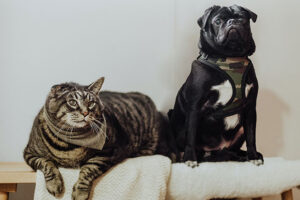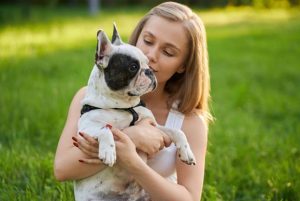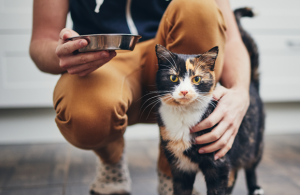Cats and communication
If only our pets could talk life would be a little easier! But as it is unlikely they will ever master the art of human language, we need to look at other ways to understand what our cats are trying to tell us. Our feline friends rely on their body language to communicate, and though this can be very subtle at times, it is worth the investment of time and effort to build trust and an increasingly loving relationship.
Meet Niamh – our Head Vet & Cat Lady!
When it comes to cats, there’s not much, Head Vet Niamh hasn’t seen, treated or cared for. A huge feline fan herself, Niamh is our resident expert in understanding cat body language and knows exactly when they are in pain, not feeling their best as well as recognising when they’re on the road to recovery.
Niamh has several cats of her own and each has its own personality! But at the end of a hard day’s work, there’s nothing more comforting than for her to return to the comfort and company of her furry feline brood.
Niamh explains “Cats have a very subtle way of communicating certain feelings, especially when they are under the weather. As vets, we learn to recognise even a hint of these signs. But as owners, you too can learn how to spot an unhappy pet and prevent any escalation of ill-health.
Always pay attention when your cat appears not to be their usual self, especially if retreating, hiding away or off their food. There is almost always an underlying reason for this, and more often than not, it is something that is very easily treated.”
If your cat is displaying any behaviour that is unusual for them, it may be a sign that there is an underlying issue. If you are in any doubt or are concerned, seek professional veterinary advice as early as possible. You vet will be able to advice on the best course of action for your cat.
Niamh’s top tips on understanding cat behaviour
Meowing
Meowing is a behaviour cats developed to communicate with humans, and they can have up to 100 different vocalisations.
The social roll
Cats in a relaxed state may lay and roll when they see you. It can be a form of greeting from them but doesn’t necessarily mean they wish to have their tummy rubbed. This is an overly sensitive part of the cat’s body and rarely do cats like this area to be touched. If your cat lies on its back or in any way reveals it’s tummy, it is indicating to you that it trusts you and feels comfortable enough in your presence to reveal its more vulnerable side. Respect that trust and your relationship will be even stronger.
Hop-up
Another happy form of greeting is the ‘hop-up’, when your cat hops onto its back paws and nudges for a little bit of fuss. This is the behaviour of a contented cat.
The tail
When your cat swishes its tail from side to side, mid height, it usually indicates indecision. This can be accompanied by pacing. Allow your cat space and time to work out what it needs to do next. An upright tail with a quiver, also known as a ‘pseudo spray’ tends to be the behaviour of a cat happy to see you – another form of positive greeting. However, a tail that is erect with some bushing of the fur suggests your cat is feeling threat of some sort and will likely be on the attack. Be wary of a cat that displays this behaviour, which is usually coupled with flat ears and teeth revealed.
Crouching
A cat that is tucked down close to the ground, its muscles tight and its tail tightly tucked into its body is a worried cat. Its ears may be slightly turned outwards and its head low with wide eyes and enlarged pupils. This behaviour is telling you they are uncomfortable, and they may not want you near them. A worried cat may also hide. It is important to leave a cat to hide in peace, undisturbed.
Facial features
A relaxed cat will have its eyes half closed, whiskers down and back into their face and ears forward yet relaxed. This cat is happy and comfortable in its surroundings. However, a cat with pricked ears, perhaps with one pointing slightly outwards, eyes open and pupils widened may be anxious or worried. This is different to a cat with ears pricked and forward, eyes wide but pupils not so enlarged and whiskers up, this cat is generally just alert – it may have heard or spotted something that interests them.
In either case, allow your cat some space to figure out the situation. Be aware of a stressed cat, who will typically display flattened ears, wide eyes and pupils, body flat to ground or perhaps seeking somewhere up high to retreat to. This cat needs you to monitor its behaviour; is it a one-off occurrence, or is this becoming more typical behaviour? Long term stress or depression in cats can lead to other health issues, so it is important to seek professional advice if you think this applies to your cat.





